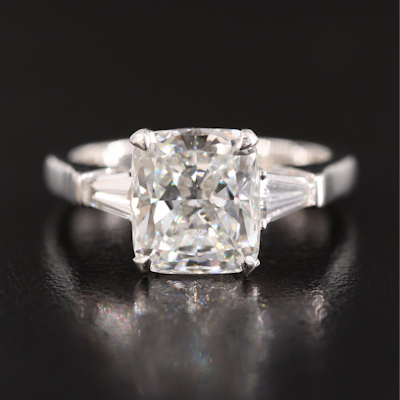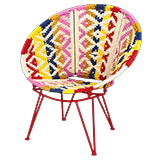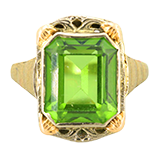Your Guide to Terminology, Styles, and Categorizations
Glossary

Art has transfixed aficionados and those who just know what they like for centuries. With a history that encompasses the entire world and most of recorded history, it only makes sense that art would have a language all its own.
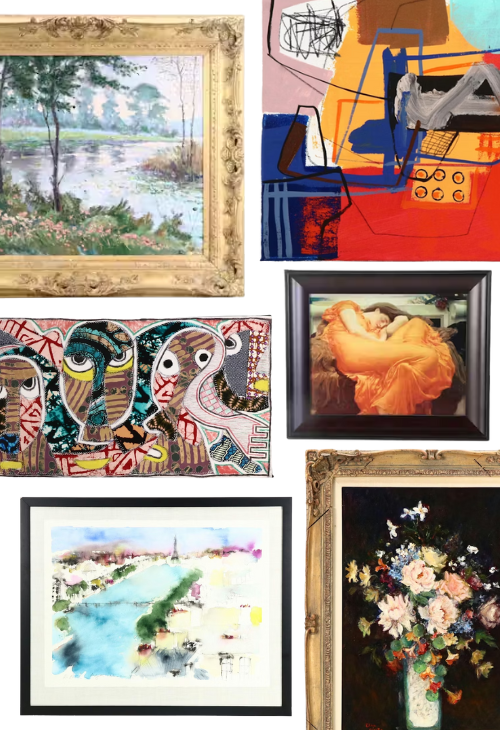
Attribution
By… EBTH’s opinion the artwork was created by or authorized by the artist.
Attributed to… EBTH’s opinion that the artwork is probably a work by the attributed artist, but there is some concern of authorship based on a lack of available provenance, an inconclusive signature, or other reasons.
Studio/School of… EBTH’s opinion that the artwork was produced by an unknown hand in the studio or workshop of the attributed artist. The pupil may or may not have produced the artwork under the attributed artists’ direct supervision.
Circle of… EBTH’s opinion that the artwork was executed during the same period of the attributed artist and in a more superior hand than an apprentice.
Style/Follower of… EBTH’s opinion that artwork was created by expert hand working in the style of the attributed artist, perhaps a contemporary but not a pupil, likely executed within 50 years of the attributed artist’s lifetime.
Manner of… EBTH’s opinion that artwork was created in the style of the attributed artist executed at a much later date.
After… EBTH’s opinion that the artwork was a copy usually after the artist’s lifetime and without knowledge or permission.

Sanford Gifford Luminist Oil Painting of Lake Sunapee, 1860

John F. Clymer Oil Painting "The Oregon Trail," 1967

Josef Albers Oil Painting "Study for a Homage to the Square"

"Landscape by the Sea", The Jean Baptiste Camille Corot from the John H. Converse Collection
Print Types
Intaglio Prints Artworks created by carving or etching into a surface, then applying ink to the recessed areas and pressing it onto paper to produce detailed, rich images. Subtypes: Collagraph, Drypoint, Engraving, Etching, Monoprint
Lithographic Prints Originally formed on the immiscibility of oil and water, this lanographic printing method where the printed image and non-printed margins are both on a single flat plane. Subtypes: Chromolithograph, Lithograph, Lithotint, Monoprint, Photolithograph, Seriolithograph
Photomechanical/Digital Prints Subtypes: Collotype, Digital Reproduction Print, Giclée, Halftone, Heliograph, Offset Lithograph, Photolithograph, Photogravure, Rotogravure
Relief The oldest printing method, in which the printing block is created by removing or cutting away the negative space of an image. Afterwards, the positive space is inked and printed. Subtypes: Collagraph, Letterpress, Line Block, Linoleum Cut, Monoprint, Relief Print, Woodblock, Woodcut, Wood Engraving
Serigraph and Silkscreens With roots in China, Japan and Egypt for the production of wall, fabric and ceramic decoration, screen printing was first patented in 1887 using silk and thick paints. Due to the ability to efficiently produce a great number of multiples, serigraphy became the leading commercial process in textiles and advertising through the 20th century.
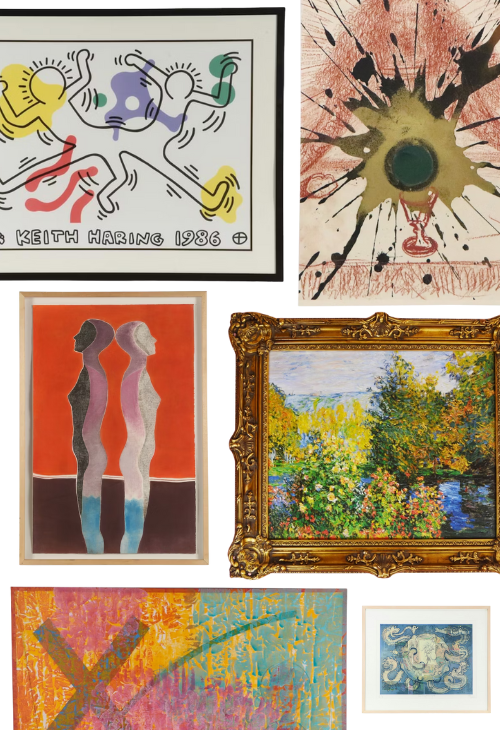

Andy Warhol "Mick Jagger II 146" Original Silkscreen
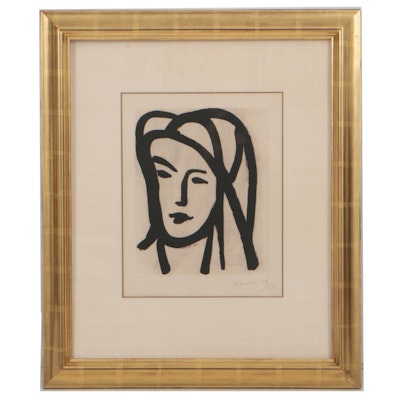
Henri Matisse Limited Edition Aquatint on Paper "Bédouine au grand voile"
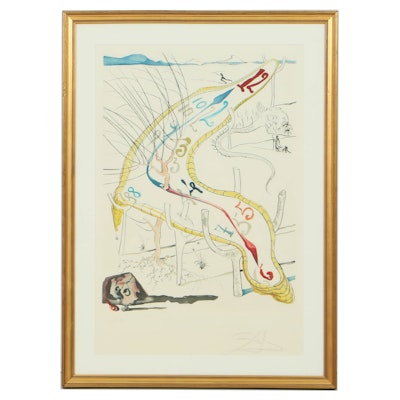
Salvador Dalí Mixed Media Print "Les Montres Gélatines De L’Espace-Temps"

George Rodrigue Artist Proof Serigraph "Mardi Gras '96"
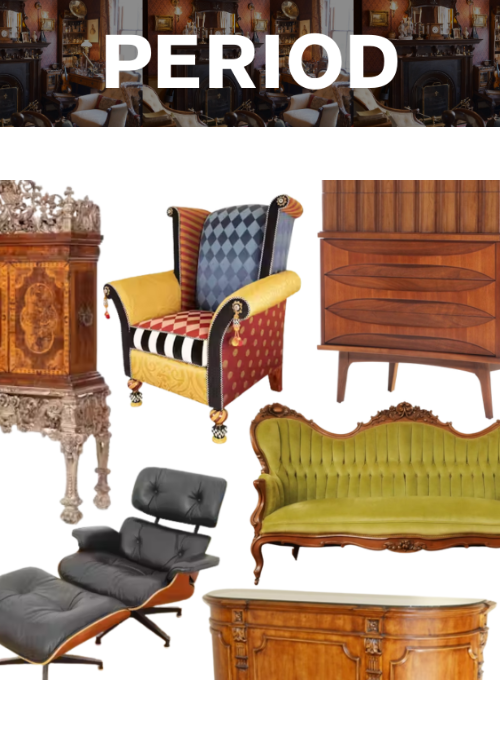
Furniture, décor, and design have long reflected the spirit of their eras, offering more than just function—they tell stories of taste, innovation, and cultural values. Whether centuries old or freshly conceived, each piece speaks in the visual language of its time.
Antiques
They just don’t make items like this anymore. In fact, they haven’t made them in over 100 years. An antique has a history, offering an opportunity to find the next home for something that has already been around for generations.
Vintage
When nostalgia meets timeless style, creating a classic look that’s as old-school cool as a vinyl record spinning on a turntable, these items are older than 20 years but less than 100 years.
Contemporary
New doesn’t mean boring. Recent trends, developed with cutting edge innovation often within sleek, modern packaging.

Vintage George Nakashima Floor Lamp With Provenance

Charles II Walnut, Mulberry, and Marquetry Cabinet on Later Giltwood Stand
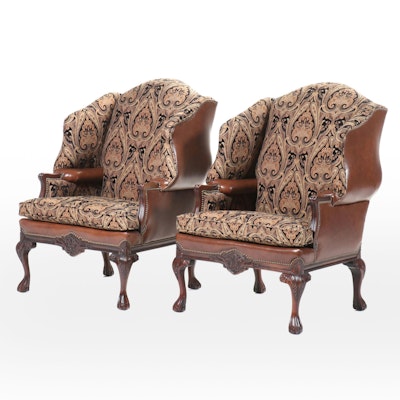
Pair of King Hickory Chippendale Style Leather Combo Wingback Armchairs

Columbia Graphanola "Lion's Head" Reginaphone Mahogany Cabinet & Phonograph
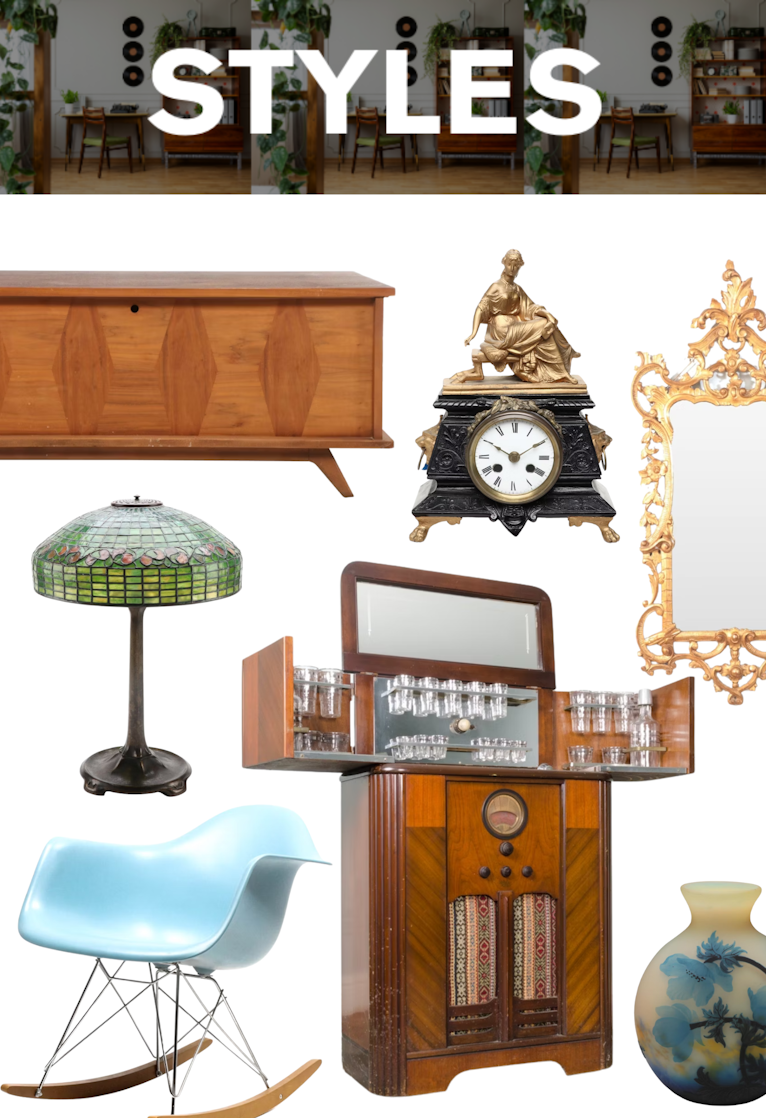
Design styles are a reflection of the ideals and aesthetics of their time—each with a distinct voice, from the ornate flourishes of Rococo to the sleek geometry of Mid-Century Modern. These movements don’t just define how things look; they reveal how people saw the world.
20th Century
Art Nouveau Characterized by intricate, flowing lines, organic forms, and elaborate decorative elements, often inspired by natural motifs unifying aesthetics across various forms.
Art Deco Characterized for its sleek, geometric forms, bold colors, and luxurious materials, combining modernist aesthetics with opulent and streamlined elegance.
Mid Century Modern Characterized by clean lines, minimal ornamentation and materials, and a seamless integration of form and function.
Neoclassical Family
Rococco Typically recognized by its light, asymmetrical designs with whimsical and elaborate ornamentation, often using pastel colors and motifs like shells and flowers.
Baroque Features dramatic, symmetrical patterns with heavy, opulent details and rich, deep colors that create a sense of grandeur and movement.
Neoclassical Emphasizes simplicity, symmetry, and classical inspiration, drawing from ancient Greek and Roman art with a focus on clarity and restraint.

Emmanuel Villanis Art Nouveau Bronze Jardinière

Karl Hagenauer for Werkstätte Art Deco Openwork Brass Mirror, Circa 1930

Eames for Herman Miller Rosewood Lounge Chair and Ottoman, dated 1978
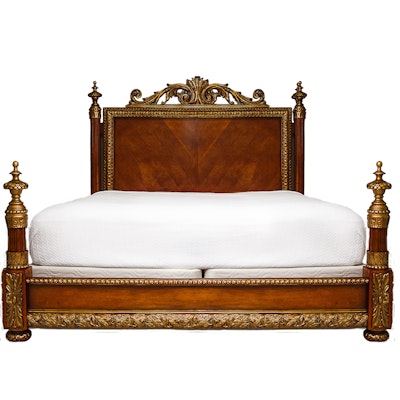
French Neoclassical Style Cherry Veneered King Size Bed
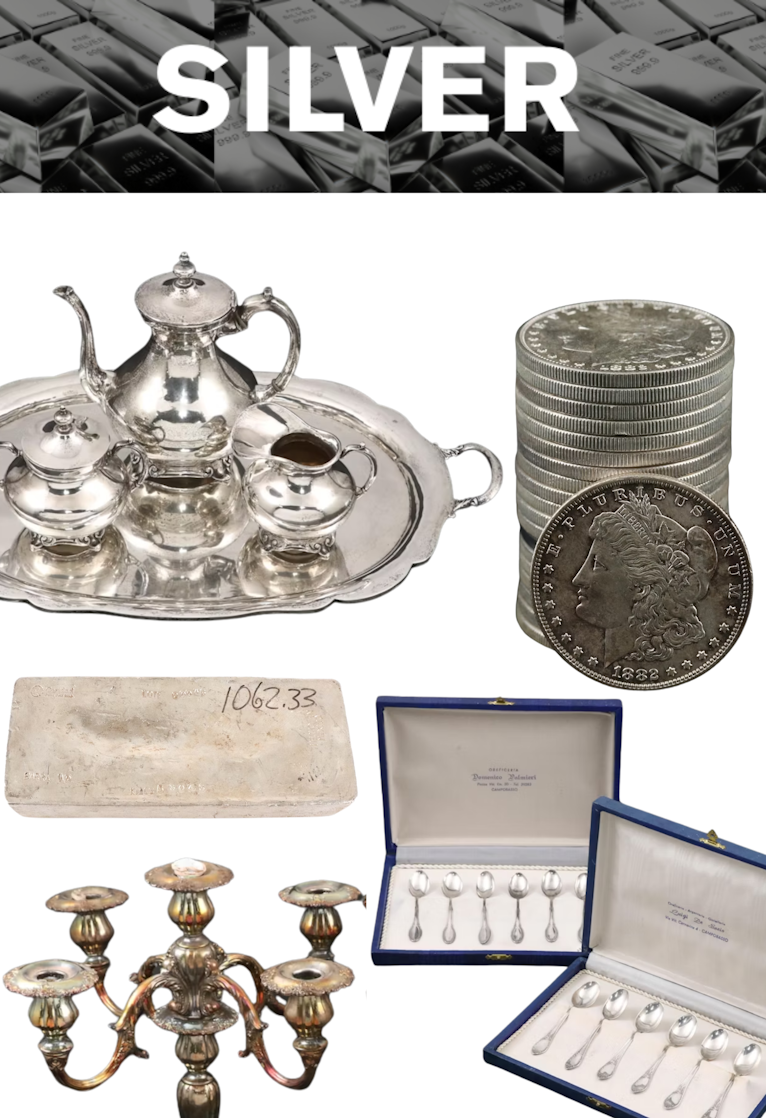
From wedding rings to napkin rings, from baby rattles to ceremonial crowns, silversmiths have been crafting with this precious metal for millennia. Due to the element’s malleability, it is often blended with other metals, and the silver parts per 1000 defines the fineness.
Fine Silver The highest purity silver commonly available and 999 parts per 1000, this is seen most in commemorative medallions, bullion and fine jewelry.
Sterling Silver The most popular of silvers, ‘sterling’ typically refers to 92.5% silver (925 parts per 1000) but can define any fineness from sterling up to fine silver.
Coin Silver/900 Silver "Coin” silver term primarily refers to 19th Century American silver, that was roughly 90% silver (900 parts out of 1000) that early British coins were made of. The true alloy can range from 750 to 950 parts, but the term “coin” stuck. It was the main silver fineness until the United States embraced the British sterling standard in 1869.
800 Silver The typical fineness of antique and vintage continental European silver, this ranges from 800-899 parts per 1000.
Silver Plate While early Old Sheffield plate refers to thin sheets of silver sandwiching a layer of base metal, “silver plate” typically refers to items on which a thin layer of silver (of varying purities) is electrochemically deposited on a base metal such as nickel, copper or steel.

Excellent Bezalel School Sterling Silver Torah Crown
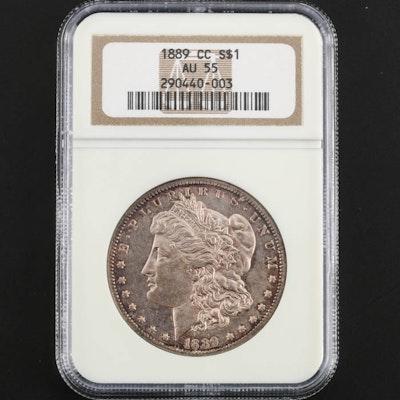
NGC Graded AU55 Key Date 1889 CC Morgan Silver Dollar

Japanese Sanju Saku Sterling Silver and Mixed Metal Repoussé Teapot, Meiji

1844 Pavel Fedorovich Sazikov Russian 875 Silver Breakfront Box with Buck Figure
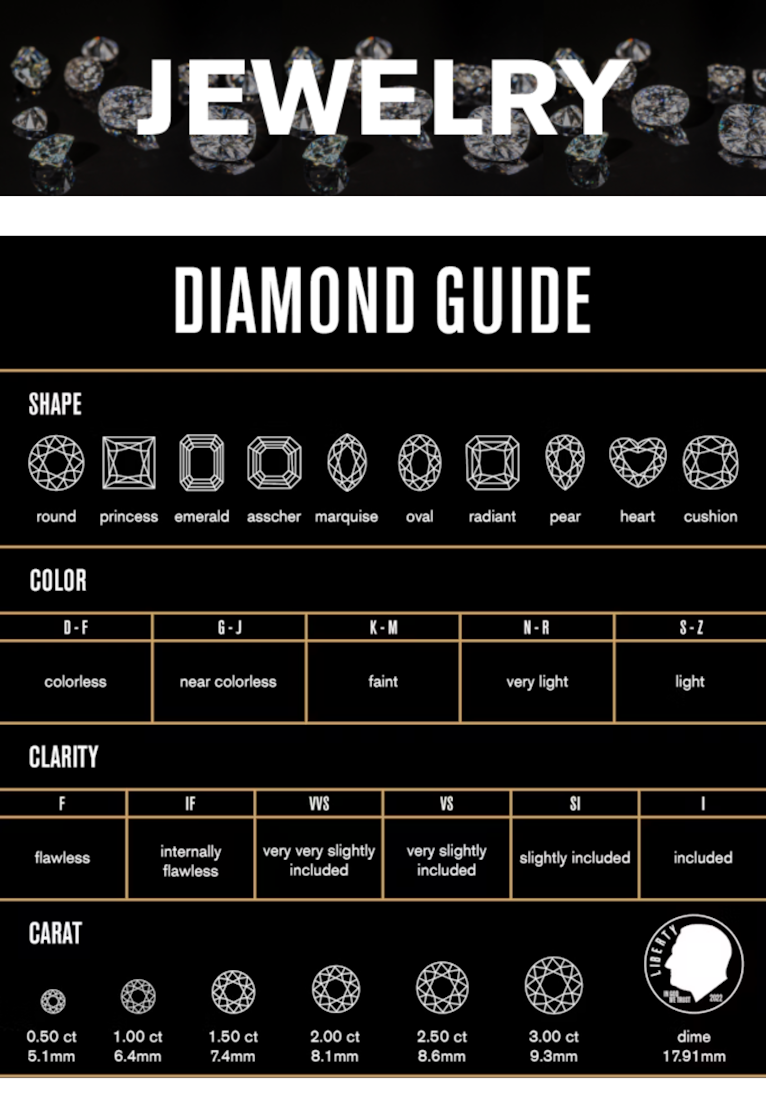
From fiery rubies, rich sapphires and bright emeralds, stones and their settings are sure to catch an eye or two. No matter if you want to understand the science behind lab grown diamonds or you want to make a statement, jewelry continues to fascinate the world over.
Diamond Guide
Carat Measures the size of the diamond; one carat equals 0.2 grams
Clarity Evaluates the presence of internal or external flaws, known as inclusions and blemishes, with higher clarity meaning fewer imperfections.
Color Assesses the presence of color in the diamond, with the highest quality being completely colorless (graded from D to Z).
Cut/Shape How the diamond has been shaped and faceted, affecting its brilliance and sparkle.

Tiffany & Co. 18K and Platinum 4.98 CTW Diamond Ring with Online GIA Report

14K 5.20 CTW Diamond Ring with (Origin Undetermined) Fancy Red Center

18K 7.26 CT Fancy Light Yellow Diamond and 2.50 CTW Diamond Ring with GIA Report
